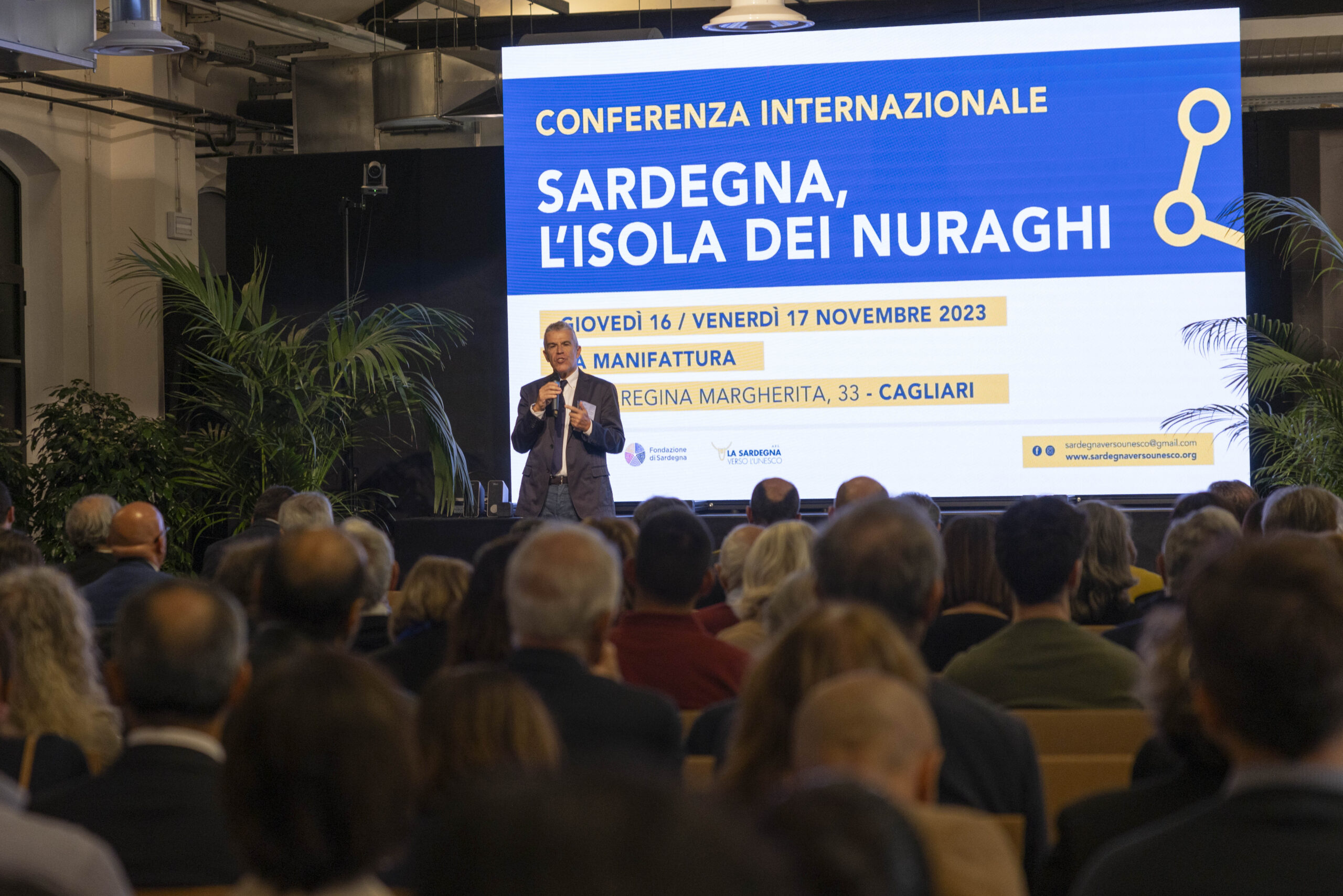Promote the candidacy of the Sardinian nuragic heritage for the UNESCO World Heritage List. Mobilize the Italian and international scientific community, called to engage with the new perspectives of study and research offered by new technologies. Strengthen the activity of telling this millennial culture, too little known in Italy and around the world, by creating a sort of new “brand Sardegna” that helps the island attract tourism twelve months a year with economic repercussions on all sectors. These are the objectives pursued by the International Scientific Conference “Sardegna, l’isola dei nuraghi”, a two-day event entirely dedicated to the ancient nuragic civilization that concluded today and which, on the 16th and 17th of November, saw the participation of over six hundred people.
In-depth analysis and debate, combined with a growing awareness of civil society and the involvement of Sardinian excellence figures working in Italy and around the world, have been the defining features of the initiative promoted by our Association in collaboration with the Fondazione di Sardegna, which included participation from various stakeholders such as institutional entities (MIC, Region, Universities, Municipalities, Superintendencies) and the entire world of associations representing Sardinian society (ANCI, trade unions, chambers of commerce, labor and business associations).
The initiative has been credited with providing a world-class stage for the project of enhancing the nuragic civilization for Unesco purposes, opening an interdisciplinary dialogue among international experts from all relevant scientific fields (archaeologists, economists, urban planners, architecture and landscape experts, communicators and marketing specialists, managers, geneticists, anthropologists), while also considering benchmarks and management models of excellence in archaeological sites in Italy and Europe. A mix of voices whose scientific coordination has been overseen by Professors Antonello Sanna and Francesco Pigliaru, united in a single major event aimed at conveying that the contribution of diverse professionals and a strong sense of vision and cohesion from all key players in this challenge is necessary to communicate the value and uniqueness of the ancient nuragic civilization.
Among the numerous guests of the two days were also the archaeologists Peter van Dommelen (Brown University, Pompeu Fabra University), Mustapha Khanoussi (Ministry of Culture, Tunis), Mark Pearce (University of Nottingham), Marcella Frangipane, a world-renowned expert in the prehistory of the Near East, economist Luis César Herrero Prieto (President of the International Cultural Economics Association), Luigi Guiso (Einaudi Institute for Economics and Finance), and Cristiana Collu (Director of the Modern Art Gallery of Rome). Also a guest of honor was Antoni Ferrer, Director of the Agency that in 2023 succeeded in having the Talayots of Menorca (contemporary monuments with many connections to the nuraghi) included in the UNESCO World Heritage List.
“We are convinced that the deep identity of Sardinia, which is represented by the unique world heritage of the monuments of the Nuragic civilization, deserves the dignity to become a UNESCO World Heritage site,” explains Pierpaolo Vargiu, president of the Associazione La Sardegna verso l’Unesco. “This is the work we are doing, and we truly believe that this recognition can serve as an extraordinary engine for development that can drive the entire economy of our Island. We have between 8,000 and 12,000 monuments of the Nuragic civilization that have become almost normal for us; they seem like an integral part of our landscape and almost no longer impress us. In reality, they are a landscape element that is extraordinary and unique in the world. We must enhance it because this diamond pulled out of the vault can become a story that fascinates the world.”
The conference was closed by Luigi Guiso (AXA Professor of Household Finance, Einaudi Institute for Economics and Finance) who focused on the economic potential of the nuragic heritage. “The nuraghi have significant economic potential, the Association is doing a great job to make people understand the value of this heritage, which is also economic. Stonehenge can represent a model. Stonehenge is just a small nuraghe, with a significantly lower visual impact potential compared to the Sardinian resources, yet it has one and a half million visitors. In Chicago, at the Chicago Tribune headquarters, there is a Roman brick embedded in the wall. This signifies that this brick is valuable, for those who do not have it, it is a rare commodity. We have an enormous wealth of archaeological assets and we must make them available to the world, making them accessible and recognizable, ensuring that this ‘new tourism’ truly becomes a powerful lever for development. We must do this by leveraging the uniqueness of Sardinia, which retains the traits and identity of a prehistoric island, a living prehistory that is unique in the world. It is a huge comparative advantage, we do not need to import a resource; this resource is already here.”

